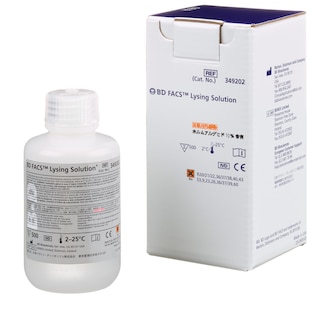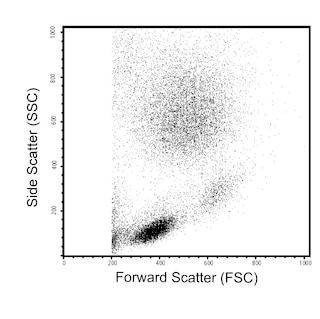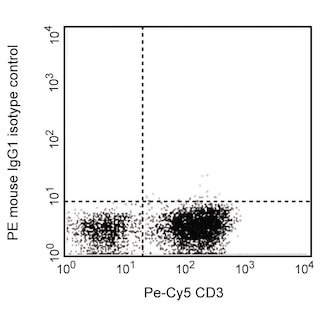-
Reagents
- Flow Cytometry Reagents
-
蛋白质印迹试剂
- 免疫分析 试剂
-
Single-Cell Multiomics Reagents
- BD® AbSeq Assay
- BD Rhapsody™ 附件试剂盒
- BD® Single-Cell Multiplexing Kit
- BD Rhapsody™ Targeted mRNA Kits
- BD Rhapsody™ Whole Transcriptome Analysis (WTA) Amplification Kit
- BD Rhapsody™ TCR/BCR Profiling Assays
- BD® OMICS-Guard Sample Preservation Buffer
- BD Rhapsody™ ATAC-Seq Assays
- BD Rhapsody™ TCR/BCR Next Multiomic Assays
-
Functional Assays
-
显微成像试剂
-
Cell Preparation and Separation Reagents
-
- BD® AbSeq Assay
- BD Rhapsody™ 附件试剂盒
- BD® Single-Cell Multiplexing Kit
- BD Rhapsody™ Targeted mRNA Kits
- BD Rhapsody™ Whole Transcriptome Analysis (WTA) Amplification Kit
- BD Rhapsody™ TCR/BCR Profiling Assays
- BD® OMICS-Guard Sample Preservation Buffer
- BD Rhapsody™ ATAC-Seq Assays
- BD Rhapsody™ TCR/BCR Next Multiomic Assays
- China (Chinese)
-
更改国家/语言
Old Browser
Looks like you're visiting us from {countryName}.
Would you like to stay on the current country site or be switched to your country?


.png)

Flow cytometric analysis of CD172a/b expression on human peripheral blood monocytes. Whole blood was stained with either PE Mouse Anti-Human CD172a/b antibody (Cat. No. 563441; solid line histogram) or PE Mouse IgG1, κ Isotype Control (Cat. No. 554680; dashed line histogram). Erythrocytes were lysed with BD FACS™ Lysing Solution (Cat. No. 349202). The fluorescence histograms were derived from gated events with the forward and side light-scatter characteristics of intact monocytes. Flow cytometric analysis was performed using a BD™ LSR II Flow Cytometer System.
.png)

BD Pharmingen™ PE Mouse Anti-Human CD172a/b
.png)
监管状态图例
未经BD明确书面授权,严禁使用未经许可的任何商品。
准备和存储
商品通知
- This reagent has been pre-diluted for use at the recommended Volume per Test. We typically use 1 × 10^6 cells in a 100-µl experimental sample (a test).
- Source of all serum proteins is from USDA inspected abattoirs located in the United States.
- An isotype control should be used at the same concentration as the antibody of interest.
- Please refer to www.bdbiosciences.com/us/s/resources for technical protocols.
- Caution: Sodium azide yields highly toxic hydrazoic acid under acidic conditions. Dilute azide compounds in running water before discarding to avoid accumulation of potentially explosive deposits in plumbing.
- For fluorochrome spectra and suitable instrument settings, please refer to our Multicolor Flow Cytometry web page at www.bdbiosciences.com/colors.
配套商品




The SE5A5 monoclonal antibody specifically binds to a common epitope on CD172a/SIRPα (90 kDa) and CD172b/SIRPβ1 (50 kDa). These transmembrane glycoproteins are members of the Signal Regulatory Protein (SIRP) family that, in turn, belongs to the Immunoglobulin superfamily. The SIRP family is comprised of two subgroups, SIRPα and SIRPβ that are distinguished by the presence (α) or absence (β) of a cytoplasmic domain containing two immunoreceptor tyrosine-based inhibition motifs (ITIM). CD172a/SIRPα is expressed on CD34+ stem/progenitor cells, cardiomyocytes, monocytes, macrophages, granulocytes, dendritic cells, and in the central nervous system. It binds to CD47 and is implicated in mediating inhibitory signals via the ITIM/SHP-2 association. CD172b/SIRPβ1 does not possess a cytoplasmic domain but instead the transmembrane domain contains a positively-charged residue that can interact with another transmembrane protein, DAP-12/KARAP. DAP-12 has two immunoreceptor tyrosine-based activation motifs (ITAM) within its cytoplasmic domain that are thought to link CD172b to cellular activation signaling. CD172b is expressed on myeloid cells, including peripheral blood monocytes and granulocytes. It is not expressed on CD34+ cells. CD172a and CD172b have complementary roles in signal regulation and may work together in tuning certain cellular responses to stimuli.

研发参考 (5)
-
Dietrich J, Cella M, Seiffert M, Bühring HJ, Colonna M. Cutting edge: signal-regulatory protein beta 1 is a DAP12-associated activating receptor expressed in myeloid cells. J Immunol. 2000; 164(1):9-12. (Biology). 查看参考
-
Dubois NC, Craft AM, Sharma P, et al. SIRPA is a specific cell-surface marker for isolating cardiomyocytes derived from human pluripotent stem cells. Nat Biotechnol. 2011; 29:1011-1018. (Biology). 查看参考
-
Ghannadan M, Hauswirth AW, Schernthaner GH, et al. Detection of novel CD antigens on the surface of human mast cells and basophils. Int Arch Allergy Immunol. 2002; 127(4):299-307. (Biology). 查看参考
-
Seiffert M, Brossart P, Cant C, et al. Signal-regulatory protein alpha (SIRPalpha) but not SIRPbeta is involved in T-cell activation, binds to CD47 with high affinity, and is expressed on immature CD34(+)CD38(-) hematopoietic cells.. Blood. 2001; 97(9):2741-9. (Clone-specific: Immunoprecipitation, Inhibition). 查看参考
-
Seiffert M, Cant C, Chen Z, et al. Human signal-regulatory protein is expressed on normal, but not on subsets of leukemic myeloid cells and mediates cellular adhesion involving its counterreceptor CD47. Blood. 1999; 94(11):3633-3643. (Immunogen: Flow cytometry, Functional assay, Immunoprecipitation, Inhibition). 查看参考
Please refer to Support Documents for Quality Certificates
Global - Refer to manufacturer's instructions for use and related User Manuals and Technical data sheets before using this products as described
Comparisons, where applicable, are made against older BD Technology, manual methods or are general performance claims. Comparisons are not made against non-BD technologies, unless otherwise noted.
For Research Use Only. Not for use in diagnostic or therapeutic procedures.
Report a Site Issue
This form is intended to help us improve our website experience. For other support, please visit our Contact Us page.